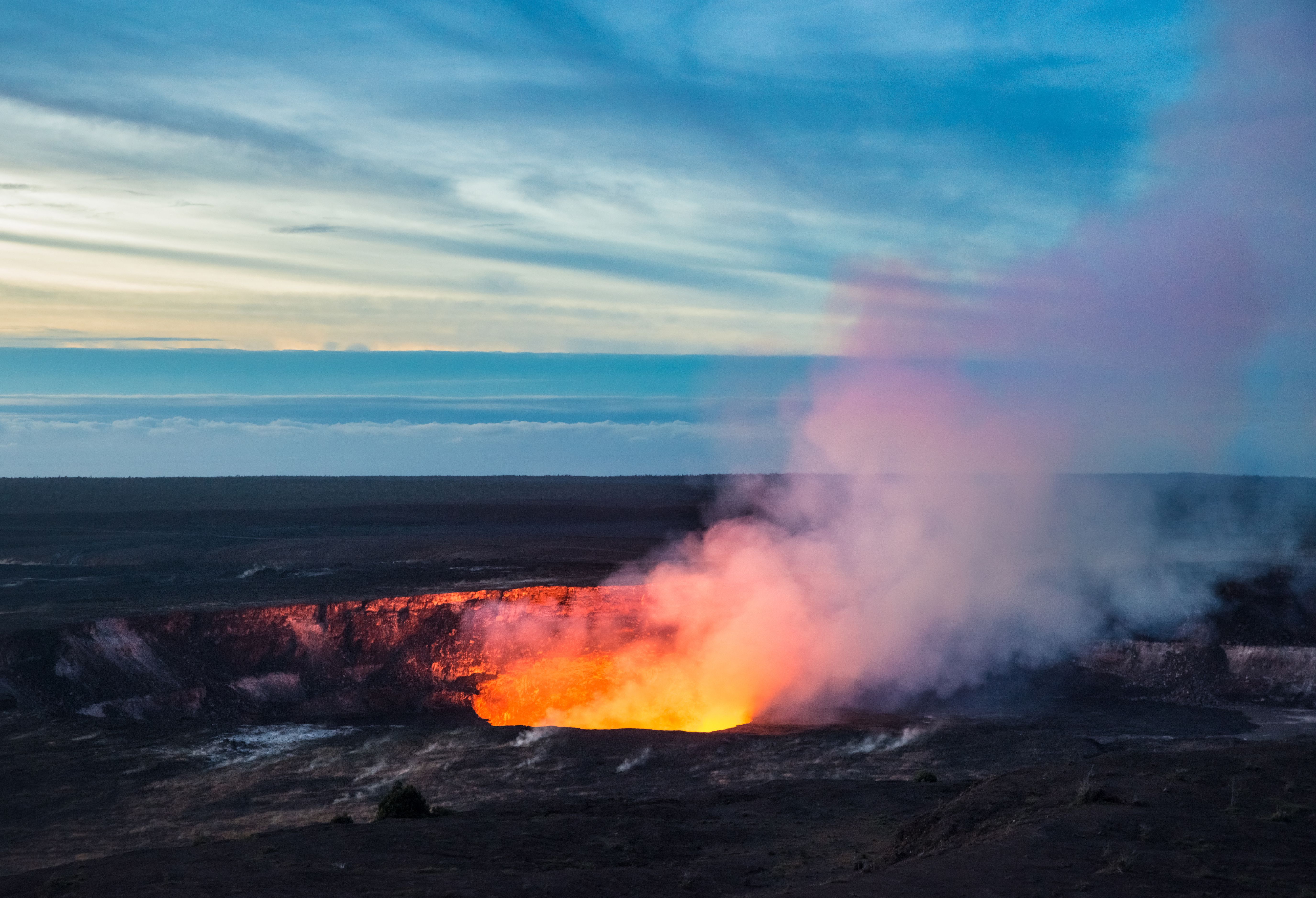New Infrared Techniques Offer Insight into Volcanic Eruption Dynamics
A recent study examined the role of infrared (IR) spectroscopy in volcanology.
A volcano is a geological formation that acts as a rupture in Earth's crust, allowing molten rock, gases, and ash to escape from beneath the surface (1). Volcanic eruptions occur because of tectonic plate movement, which creates pressure in the magma chambers below (1). There are several types of volcanoes, which include cinder cone volcanoes, composite volcanoes, shield volcanoes, and lava dome volcanoes. As a geological formation, the volcano offers physical insight into tectonic plate movements and the formation of the planet. As a result, studying volcanoes can provide insight into planetary geological formation and history (1).
Fire and steam erupting from Kilauea Crate, Hawaii Volcanoes National Park, Big Island of Hawaii | Image Credit: © Alexander Demyanenko - stock.adobe.com.

A recent article published in Frontiers in Earth Science examined this issue by showing how infrared (IR) spectroscopy can be used to provide a detailed analysis of volcanic features. IR reflectance and emission spectroscopy, covering the near-infrared (NIR) (0.7 to 2.5 μm) to thermal infrared (TIR) (3.0 to 15 μm) portions of the electromagnetic spectrum, allows researchers to obtain important information about volcanic rocks (2). For example, these techniques can help scientists better understand past eruptions because they can compile spectra data on the composition, surface roughness, and particle size of materials (2).
Lead author Daniel B. Williams of the University of Pittsburgh starts the review by discussing spectroscopy’s utility to study volcanoes. He points out that volcanoes are sometimes in remote areas, and as a result, direct sampling cannot work (2). As a result, remote imaging systems mounted on satellites or airborne platforms provide data that ground-based instruments might miss, especially in hazardous areas where eruptions are active. With these data, volcanologists can analyze eruptions in real-time, gaining insights into both eruption processes and subsequent lava flow patterns (2).
As a result, this topic is a main focus of the article. One of the major focuses of the review is how laboratory data can be resampled to match the spectral resolution of infrared sensors on satellites (2). This advancement lets scientists draw comparisons between laboratory samples and satellite data, bridging the gap between controlled, laboratory studies and real-world, large-scale observations (2). By evaluating different spectral bands and resolutions, researchers can determine the best instruments for specific analyses and identify the types of data required to predict and monitor eruptions effectively (2).
Spectroscopy has also been used in volcanology to acquire information across many wavelengths through hyperspectral imaging (HSI). HSI has been used to learn more about the compositions of volcanic rock, which in turn helps reveal the type of eruption that took place that led to its formation (2).
Obtaining hyperspectral data is going to be a focus in volcano science moving forward, and future satellite missions indicate this trend. The authors write in their article that the ECOSTRESS mission provided thermal data essential for temperature and composition analysis, and the upcoming Surface Biology and Geology (SBG) mission will contribute hyperspectral data relevant to TIR applications (2).
These upcoming missions, and the increased usage of HSI, indicate that IR spectroscopy is being increasingly used in volcanology. In addition to exploring volcanic activity on Earth, the authors discuss how using IR spectroscopy in volcanology can benefit planetary exploration. Volcanic rocks, or analogs, from locations like the Moon or Mars, offer a comparative foundation for understanding volcanic processes across different celestial bodies (2). Because IR data is often the primary type available for these planetary studies, the techniques and methods honed in terrestrial volcanology are invaluable for interpreting extraterrestrial volcanic activity (2).
As a result, the use of IR spectroscopy to study volcanoes is only expected to increase in the years and decades ahead. With advancements in satellite technology, researchers have the opportunity to get improved spectral and temporal resolution from their instruments, allowing them to study past volcanic eruptions and monitor volcanic processes (2).
References
- Volcano Hazards Program, About Volcanoes. USGS.gov. Available at: https://www.usgs.gov/programs/VHP/about-volcanoes (accessed 2024-10-30).
- Williams, D. B.; Ramsey, M. S. Infrared Spectroscopy of Volcanoes: From Laboratory to Orbital Scale. Front. Earth Sci. 2024, 12, 1308103. DOI: 10.3389/feart.2024.1308103
AI Shakes Up Spectroscopy as New Tools Reveal the Secret Life of Molecules
April 14th 2025A leading-edge review led by researchers at Oak Ridge National Laboratory and MIT explores how artificial intelligence is revolutionizing the study of molecular vibrations and phonon dynamics. From infrared and Raman spectroscopy to neutron and X-ray scattering, AI is transforming how scientists interpret vibrational spectra and predict material behaviors.
Real-Time Battery Health Tracking Using Fiber-Optic Sensors
April 9th 2025A new study by researchers from Palo Alto Research Center (PARC, a Xerox Company) and LG Chem Power presents a novel method for real-time battery monitoring using embedded fiber-optic sensors. This approach enhances state-of-charge (SOC) and state-of-health (SOH) estimations, potentially improving the efficiency and lifespan of lithium-ion batteries in electric vehicles (xEVs).
New Study Provides Insights into Chiral Smectic Phases
March 31st 2025Researchers from the Institute of Nuclear Physics Polish Academy of Sciences have unveiled new insights into the molecular arrangement of the 7HH6 compound’s smectic phases using X-ray diffraction (XRD) and infrared (IR) spectroscopy.